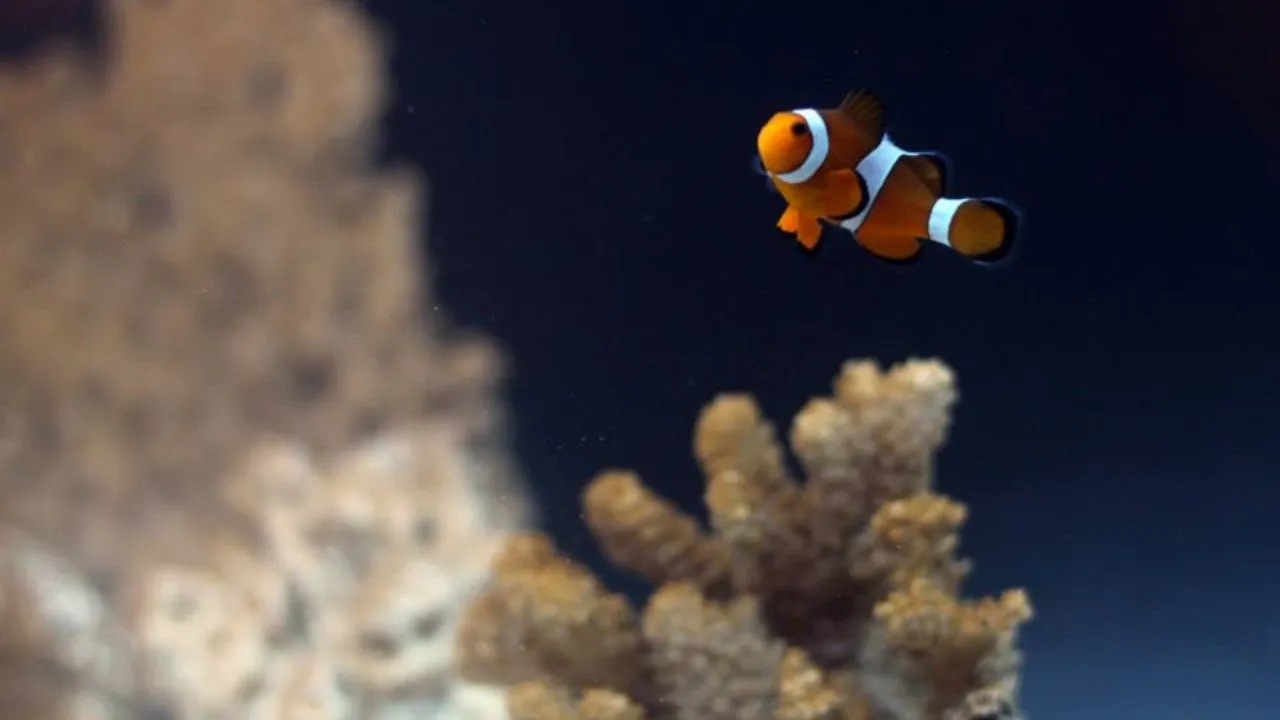What Size Tank Do Clownfish Need?

Clownfish need a saltwater tank. But the tank size depends on several factors like how many fish you want to keep, adult or juvenile, species, hiding space, etc.
A juvenile clownfish needs a minimum 10 gallons tank. For each Adult clownfish, the recommended tank requirement is 20 gallons. If you keep a pair of adult clownfish, you need at least a 30-gallon tank.
In this article, I’ll go into detail about the exact requirements of a clownfish tank’s size.
How Big Do Clownfish Grow?
A clownfish’s size varies depending on its species and genetic makeup. Individual clownfish within a species can vary in size due to genetic variations, and some species of clownfish are naturally larger than others. In addition to genetics and species, the size of a clownfish can also be influenced by environmental conditions, diet, stress levels, etc.
In the wild, clownfish typically grow to a length of 3 to 4 inches. However, some clownfish species, including the Maroon Clownfish, Tomato clownfish, and Pink Skunk Clownfish, can get a little bit bigger and grow up to 6 inches long. Clownfish that are fed well and are kept in an aquarium with lots of room to swim and hide are more likely to grow to their full size.
Do Clownfish Need a Big Tank?
No, clownfish do not necessarily require a large tank. However, there are a few factors to take into account when choosing the correct tank size for your clownfish.
Typically, clownfish are not very big. However, they require a tank that is at least 10 to 20 gallons in capacity, depending on their size, age, and number. Given the size of the clownfish, a beginner can opt for a small tank.
It’s also crucial to remember that sea anemones and clownfish frequently coexist in the environment. An essential component of their native habitat is these symbiotic connections. You will require a larger tank if you intend to have anemones in it so that there is room for both the anemones and the clownfish.
In general, a huge tank is optional for clownfish. Larger tanks, however, can always be advantageous because they provide greater room, stability, and ease of maintenance.
How Big Should A Tank Be For Clownfish?
Follow these steps to determine the correct tank size for clownfish:
- Choose how many clownfish you wish to keep. At least 10 gallons of water are necessary for each juvenile clownfish to survive. However, adult clownfish require 20 liters of water per fish.
- If you’re thinking of keeping any additional fish or invertebrates in the tank. Per additional fish or invertebrate, add 10 additional liters of water.
- Next, decide the size and species of your clownfish. Some species, like the Pink Skunk Clownfish, Tomato Clownfish, and Maroon Clownfish, can grow up to 6 inches long and require more room. Add 10 additional liters of water for every inch of length over 4 inches for larger breeds.
- Now figure out how much water you will need to support your fish. For example, you would want 40 gallons of water if you had 2 adult clownfish and 1 additional fish (30 gallons for the 2 adult clownfish + 10 gallons for the new fish).
Remember that having a larger tank is always preferable to have a smaller one.
Recommended & Minimum Tank Sizes For Clownfish

| Tank Size | Number Of Clownfish | Requirements |
|---|---|---|
| 10 gallon | 1 Juvenile Clownfish | Minimum |
| 20 gallon | 1 Adult Clownfish | Minimum/Recommended |
| 30 gallon | 2 Adult Clownfish | Recommended |
| 75 gallon | 5 Clownfish | Large Tank |
How Long do Clownfish Live in a Tank
The average lifespan of a clownfish in a tank is about 3-6 years. You can extend their lifespans to 15, 20, or even 30 years with proper care. Many aquarists successfully kept their clownfish for 20 to 30 years. However, it’s important to note that this can vary significantly depending on various factors, such as the size of the tank, the quality of care they receive, and the specific species of clownfish. For example, smaller species of clownfish, such as the Percula clownfish, tend to have shorter lifespans. On the other hand, larger species like the Maroon clownfish can live up to 20 years or more with proper care.
Final Words
I hope this article made you understand the size of clownfish tanks. An ideal size aquarium ensures vibrant and playful clownfish. So, choose a tank size for your clownfish in light of the discussion above.
Frequently Asked Questions (FAQ)
Clownfish cannot survive in a 5-gallon aquarium, so no. A 5-gallon tank is too small to provide enough filtration, water volume, and circulation for a single clownfish. As a general rule of thumb, a single adult clownfish needs at least 20 gallons of water to survive.
Clownfish can indeed exist in isolation in an aquarium. However, it is not advised. Since clownfish are social animals, they benefit from the company. If you are considering keeping a clownfish, it is best to provide them with at least one or two companions to ensure they are happy and healthy. Clownfish can grow lonely and agitated without this social connection, which can harm their general health and shorten their lifetime.
Percula clownfish, also known as Percula clowns, are small saltwater fish, so they do not require a large tank. The minimum recommended tank size for a single Percula clownfish is 10 gallons. But you will need at least a 20-gallon tank if you intend to raise more than one Percula clownfish.
Related Reading: How To Reduce Clownfish Aggression?
